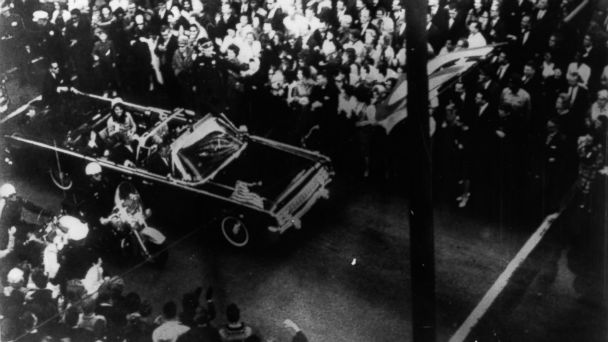New Research Challenges JFK Death Conspiracy Theory

(Image Credit: Keystone/Getty Images)
It took researcher Larry Sabato about five years to build his case against a 34-year-old conclusion that President John Kennedy died as part of some unspecified conspiracy.
“Any author that tells you, in this anniversary season, that this is a closed case, is willfully ignoring many established facts,” Sabato said at a news conference this week in Washington, D.C.
With the 50th anniversary of Kennedy’s assassination approaching next month, the University of Virginia professor says he has uncovered evidence that casts doubt on a key piece of evidence that led the 1979 House Select Committee to conclude that the former president was the victim of a conspiracy.
WATCH: Kennedy Has Been Shot
Sabato’s new 624-page book, “The Kennedy Half-Century: The Presidency, Assassination, and Lasting Legacy of John F. Kennedy,” details the findings of a new analysis of the Dallas Police Department’s scanner traffic audio, or Dictabelt, from that fateful November day in 1963.
His conclusion: Contrary to the 1979 report, sounds previously believed to be gunshots, which led the committee to conclude that assassin Lee Harvey Oswald acted in tandem with a co-conspirator, are actually mechanical sounds from a motorcycle policeman, who was located miles away from the assassination scene.
Sabato also took aim at the findings of the Warren Commission, which looked into the assassination and released its report in 1964. The professor accused its investigators of creating a credibility gap and a half-century of unanswered questions.
Robert Dallek, a historian and author of “An Unfinished Life: John F. Kennedy, 1917-1963? who supported the Warren Commission’s lone-gunman finding in his 2003 biography, said he hadn’t read Sabato’s book.
“But I still support the conclusion that Oswald was the lone gunman,” Dallek said in a statement to ABC News.
Sabato sought to discredit the Central Intelligence Agency’s involvement with the commission, saying that the CIA coached witnesses and hid others. Sabato reiterated that the commission “failed to interview other key witnesses that 45 years later, I interviewed.”
Sabato also took the House Select Committee to task, asserting that their findings were “demonstrably wrong.”
“By no means were the sins of the HSCA [House Select Committee on Assassinations] equivalent to the Warren Commission, however, the HSCA, like the Warren Commission did not succeed,” he said. “Our analysis shows that no gunshots were recorded on the dictabelt.”
The sounds that were recorded, that were previously mistaken for gunfire, Sabato and his team believe, were from a motorcycle policeman and a stuck microphone. Additionally, the policeman on the recording was not on the scene in Dealey Plaza during the assassination. He was stationed 2 miles away, in a location that would be unable to pick up gunfire from the tragic shooting.
Speaking about his work, Sabato said, “the best contribution we could make is to clarify, as much as we could.”
Any clarification about the assassination of the youngest elected president is welcome by some because many conspiracy theories have developed in the 50 years since Kennedy’s death. Some examples of popular theories are: JFK’s death was the result of an organized-crime hit; the CIA killed JFK because of his stance on Cuban foreign policy; the Russian KGB was involved in planning the president’s assassination; and JFK was killed because of his interest in aliens.
In addition to the book, professor Sabato and his team have also created a website, a free four-week online course, a smartphone app and a PBS documentary, which will be released nationwide in November, covering the beloved former president.
Along with the analysis of Kennedy’s assassination, Sabato devotes a large portion of his book to the lasting legacy of the 35th president, specifically focusing on how presidents after Kennedy have used his words and image to shape their own political goals.
President Lyndon B. Johnson’s war on poverty was borrowed extensively from Kennedy’s agenda, according to Sabato. President Ronald Reagan used Kennedy to justify his tax cuts and Cold War policy, which Sabato pointed out. And President George W. Bush followed in Reagan’s footsteps, at times using Kennedy’s words to support his tax cuts and fiscal policy.
*** This article has been archived for your research. The original version from ABC News can be found here ***


